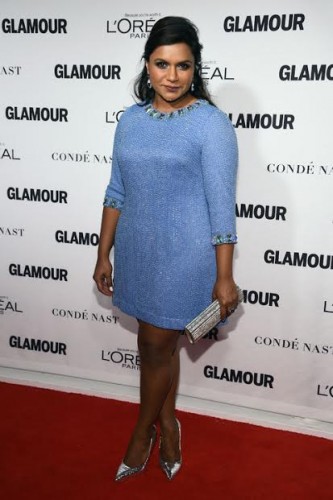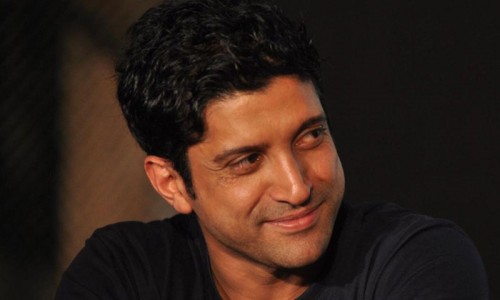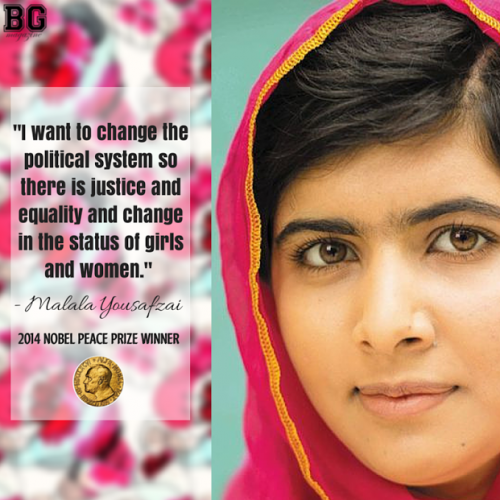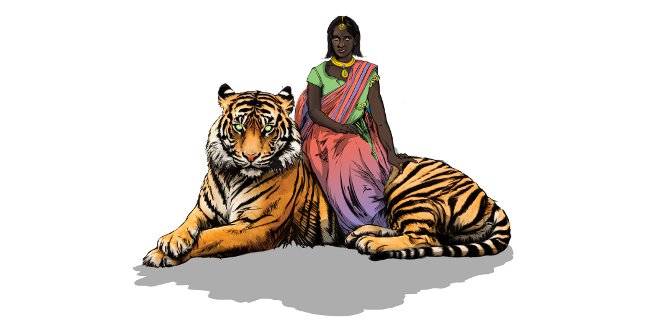
In collaboration with Trisha Sakhuja
Given that South Asian countries are listed as some of the most dangerous places to be a woman, every action and voice – however small or big – is a much-needed step forward. We salute every South Asian feminist taking a stand, even if you didn’t make our list of advocates.
1) Mindy Kaling’s spot on Glamour’s 2014 Women of the Year and her hit rom-com sitcom “The Mindy Project” makes her the perfect fit for the number one spot on our list.
I’m a f*cking Indian woman who has her own f*cking network television show,” Kaling said in March at SXSW in Texas. “I have four series regulars that are women on my show, and no one asks any of the shows I adore — and I won’t name them because they’re my friends — why no leads on their shows are women or of color, and I’m the one that gets lobbied about these things.”
Hats off to Kaling for being so outspoken because she did indeed manage to make it in a male-dominated industry with very few South Asian faces.
More inspiring was to learn that her show is fueled by feminist principles. In an interview with Glamour magazine earlier this year, she said, “I am a feminist. So if that leaks into every episode of the show, I (a) like it and (b) don’t do it on a conscious level. That’s just our standpoint.”
Kaling is modern-day proof that a show inspired by feminism – in other words, one that respects women – can do really well, thereby hopefully establishing a new precedent. We know we will continue to see Queen Kaling rock the TV screen for years to come.
[Check out Mindy Kaling’s amazing sense of style]
2) Bollywood film actor-filmmaker-singer Farhan Akhtar, the South Asian ambassador to the United Nations, stood up for women like a real man.
Akhtar, also the founder of the gender equality campaign Men Against Rape and Discrimination [#MARD], released earlier this year, became the first-ever male U.N. Women’s Goodwill Ambassador for South Asia in November.
I am honoured to serve U.N. Women as the Goodwill Ambassador for South Asia,” Akhtar said in a statement released by the U.N. “This gives me and our MARD initiative an added impetus to work together towards a more gender equal India and world. I am a supporter of UN Women’s HeForShe campaign and the role men and boys can play in stopping crime against women and girls, and working towards gender equality. Through this new partnership I want to call on all men and boys to be a catalyst for change and, through our actions, create a value system to end gender disparity.”
And that’s not all. This month, he also fiercely stood up for actress Gauhar Khan after she was slapped by a man on stage for dressing in revealing clothing.
In an intensely patriarchal culture, it takes guts to stand up for women the way Akhtar does. If we ever want to see a gender equal world, men’s participation in the movement towards ending discrimination against women is of utmost importance. So, for an established and well-known man like him to take such a stance gives boys and men – both South Asian and not – a role model to look up to. We need to see more and more men stand up in solidarity, and in fact, become feminists. Dare we say that? #SorryNotSorry
[Read more about Farhan Akhtar’s mission to empower women]
3) The #EmBODYIndia campaign conveyed simple but mindful messages about women’s rights through powerful photos and blunt captions.
![[Photo Source: Embodyindia.tumblr.com/]](https://browngirlmagazine.com/wp-content/uploads/2014/12/embody-335x500.jpg)
Such a campaign is necessary to stamp out the roots of violence against women, by emphasizing one global message: a woman’s body is her own and her clothes are never an invitation.
[Read more about the #EmBODYIndia Campaign]
4) Parineeti Chopra schooled a male journalist for making a sexist joke, and we loved every second of it.
A male journalist deservedly became a laughingstock after making a disgusting rape joke during a press conference stating, “When girls are young, they like ‘it.’ And when they are older they scream and shout that the boy exploited them!”
Bollywood actress Chopra fiercely struck back, and rightfully so. Not only did she shut down the entire laughing audience, she also caught the world’s attention by receiving more than 840,000 views on Youtube for her response, as of date.
Rape jokes like these perpetuate and reveal sexist attitudes in the media and society that allow rape culture to flourish. In a country like India where rape is the fourth most common crime against women, it is insensitive at best – disturbing and dangerous at worst. Rape is not a joke. Well done, Chopra, for standing up and shutting him down.
6) Children’s rights activists Malala Yousafzai, the youngest recipient of the Nobel Peace Prize as of October, has her own day, “Malala Day,” dubbed by the U.N.
No article honoring South Asian feminist moments is complete without mention of the great Yousafzai. Being that she is a young girl who was shot and nearly killed by Taliban at the age of 14, for advocating for education, her life is a powerful feminist message in itself. To top it off, she refused to miss class to receive her prize.
The terrorists tried to stop us,” Yousafzai said to the room full of dignitaries at Oslo, Norway, when receiving her prize with Indian Kailash Satyarthi in early December. “Neither their ideas nor their bullets could win. We survived. And since that day, our voices have grown louder and louder.”
[Read more about Malala Yousafzai’s power to inspire others]
7) The Oxford-graduate and entrepreneur Ruzwana Bashir, brought up in a British-Pakistani community, publicly shared her story of being shunned for abuse.
After it was revealed that more than 1,400 children of Pakistani heritage were sexually abused in Rothertham, England, Bashir – named by Forbes as “30 Under 30 in Technology” – eloquently wrote about her own experience of being sexually abused by a neighbor at the age of 10. After a decade of remaining quiet to protect her family’s name, she found the courage to speak and testify against her abuser. Even though she and other victims alike received lots of pressure to drop their cases, their perpetrators deserve to be convicted and shunned. It’s evident from Bashir and other silenced victims, when reporting abuse or rape, too often in South Asian cultures, woman are either not believed or blamed, traumatizing and isolating them even further.
I am and always will be proud of my Pakistani heritage, but I firmly believe community leaders must take responsibility for the fact that the taboos that prevent others from identifying perpetrators and supporting victims enable further abuse. And those taboos must be challenged,” Bashir wrote on The Guardian.
Following her brave confession and her list of mandatory steps communities need to take to save young girls from abuse and shame in their communities; it inspired many others to come forward with their own stories and fight against stereotypes that this is just a “Muslim-Pakistani” problem.
8) Bollywood actress Deepika Padukone’s open letter to The Times of India speaks volumes about the way media objectifies female celebrities and blurs the line between their “reel and real” life.
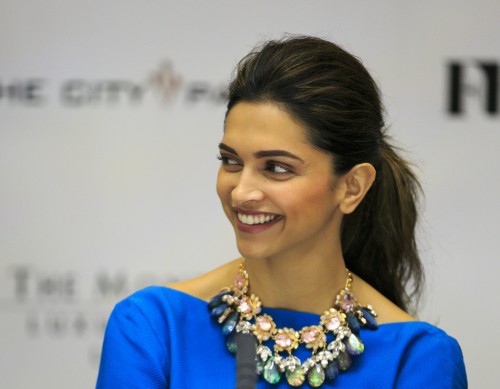
Supposedly India’s ‘LEADING’ newspaper and this is ‘NEWS’!!?? pic.twitter.com/D3wiVVXuyM
— Deepika Padukone (@deepikapadukone) September 14, 2014
…At a time when we are striving for women’s equality and empowerment. In a time where women should be applauded for making headway in a male-dominated society…Digging out an old article and headlining it ‘OMG: Deepika’s Cleavage Show!’ to attract readers is using the power of influence to proliferate recessive thought,” Padukone writes in the letter.
A well-known and respectable celebrity with many hits under her belt took immediate action to send a powerful and much-needed message to all South Asian women: In the face of misogyny, stand up for yourself.
9) Indian film director and mom of three Farah Khan broke records with her movie “Happy New Year,” starring Sharukh Khan.
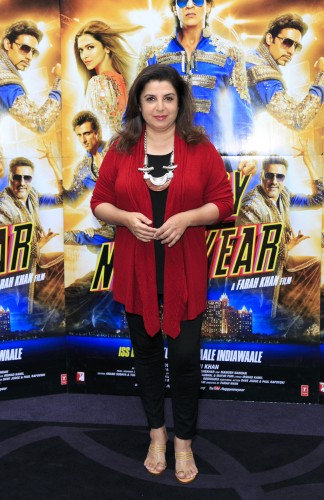
Farah Khan’s film,”Happy New Year,” broke records this year– both for garnering millions at the box office and for having a female director.
Nobody is expecting a 200 crore ($33 million)(£20.85 million) hit from a woman director, which in itself is very sad and very patronising,” Khan told Reuters about her stellar achievement. The movie isn’t exactly a hit with the critics, but the director has obviously struck a chord with her audience. I hope more women come and break this record. I think it will help every woman who wants to go out and make a movie, if our movies end up making as much money as the male directors.”
We are sure Khan’s achievement in the male-dominated film industry will inspire many more female filmmakers to step out of their shell and stand behind the camera.
10) Actress Freida Pinto’s comments about feminism and gender roles are a much bigger deal than her recent break-up with co-star Dev Patel.
 Feminism’s often deemed a derogatory term, synonymous with anti-male sentiment. The 30-year-old star of Oscar-winning “Slumdog Millionaire” used her voice to clarify this misperception to the Press Trust of India earlier this month.
Feminism’s often deemed a derogatory term, synonymous with anti-male sentiment. The 30-year-old star of Oscar-winning “Slumdog Millionaire” used her voice to clarify this misperception to the Press Trust of India earlier this month.
Feminism to me is equality. There is no man over woman and vice versa. Feminism is a very misconstrued and misunderstood topic. As soon as we say feminism, it does not mean all men should become subordinate and women should be the ones who rule the world. The only way we can have a progressive and successful country or world is when men and women treat each other as equals.”
She also highlighted the need to battle outdated gender norms contributing to a sexist society:
There are certain roles that men play and others that women play. Our reproductive organs are different and clearly there is a reason why women carry the baby but that does not mean the man cannot help out with the caring of the child…Father is as much a nurturer as the mother. I grew up with that equality so I can say people who understand feminism understand that men and women are equal but have different roles to play.”
Well done, Pinto! More so, Pinto made headlines when her and superstar Priyanka Chopra joined hands to become the new supporters of the Girl Rising movement, a film and campaign designed to educate more girls, so that cycles of poverty can be broken in just one generation.
Together we’re #GirlRising ! Thank u @BecauseImFreida for being on this journey with me! @girlrising pic.twitter.com/phYFJa6gXv — PRIYANKA (@priyankachopra) November 29, 2014
11) Filmmaker and New York-based journalist Habiba Nosheen won an Emmy for her documentary “Outlawed in Pakistan.”
Nosheen, a busy mom to a baby boy, filmmaker and journalist with 60 Minutes and an adjunct professor at Columbia University’s Graduate School of Journalism, is one of the very few South Asians in history to win an Emmy. Her award-winning documentary, “Outlawed in Pakistan,” tells the story of a Pakistani gang-rape survivor’s struggle to receive justice.
Despite being a highly accomplished woman and fervent activist, her Twitter biography reads her most important accomplishment is being the “mother of an amazing little boy.”
I hope we’ll have more South Asian women entering journalism and bringing unique perspective to news outlets,” Nosheen said to Brown Girl Magazine. “I get asked all the time, ‘Who is watching your kid when you are traveling?’ — which is so funny because the assumption in that question is that dads are not able to be in charge of childcare.”
Feminism isn’t just about activism and external achievements, while discarding and minimizing conventional female roles, it is about being allowed to be a whole human being – men and women alike. Thank you for embodying genuine female empowerment, Nosheen.
[Read Habiba Nosheen’s full profile]
12) M.C. Mary Kom—five-time World Amateur Boxing Champion and the only Indian woman boxer to have qualified for the 2012 Summer Olympics — rose to support The Taj Must Smile campaign, advocating for behavioral change and encouraging awareness about feminine health needs.
![[Photo by Chung Sung-Jun/Getty Images]](https://browngirlmagazine.com/wp-content/uploads/2014/12/456471782-500x330.jpg)
We need to break this taboo and teach our daughters that it is okay to have periods and it should not weigh them down mentally or physically or hold them back from accomplishing their dreams,” Kom wrote in an article on the occasion of International Day for Rural Women.
This September, Kom’s Bollywood biopic, starring Priyanka Chopra, chronicled how she defied cultural gender stereotypes and the odds to rise from poverty to become a champion boxer. What is even more inspiring about the movie and Kom’s story is how the men in her life supported her dreams. And of course, it was great seeing Chopra play such a strong female character so well, adding to the commercial popularity of film.
[Read more about the Taj Must Smile Campaign and Mary Kom’s support]
13) When Indian-American comedian Aziz Ansari jumped on board the feminist train.
“…Because if you look up feminist in the dictionary, it just means someone who believes men and women have equal rights. And I feel that everyone here believes men and women have equal rights,” Ansari said on The Late Show with David Letterman in October.
Best of all, Ansari said this awakening comes from his girlfriend, who pushed him towards the realization that he already was a feminist. As many look up to Ansari – for his comedic talent and the fact that he is one of the few famous South Asian American entertainers – this is truly inspirational. Why is his appearance on the show so memorable? With lots of poise, Ansari easily demonstrates that it is not only cool to be a male feminist, but it is also cool to have a supportive and understanding relationship with your girlfriend.
14) New York-native Nina Davaluri’s reign as Miss America 2014 proves the face of America has changed.
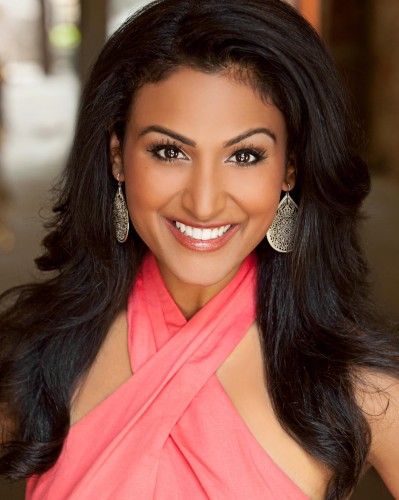 Whatever your opinion may be of beauty pageants, one cannot deny how historically significant it was to see the first South Asian American to be crowned the title of Miss America 2014. It is no secret that the Miss America pageant represents the “ideal American woman,” so her win is not only a huge step forward for South Asians and other minorities in the country, but also for South Asian women and our visibility in the world.
Whatever your opinion may be of beauty pageants, one cannot deny how historically significant it was to see the first South Asian American to be crowned the title of Miss America 2014. It is no secret that the Miss America pageant represents the “ideal American woman,” so her win is not only a huge step forward for South Asians and other minorities in the country, but also for South Asian women and our visibility in the world.
Minutes after Davaluri was crowned Miss America in September 2013, social media sites exploded with vile Twitter abusers shamelessly calling her a “terrorist.” She faced her racist attackers with dignity and class.
Btw, #NinaDavuluri is a native to Syracuse, NY & being Indian doesn’t make you Arab or a terrorist. #MissAmerica http://t.co/OfTAgZUvLo
— Lauren J. Mapp (@LaurenJMapp) September 16, 2013
I’m so happy that this organization has embraced diversity. I am thankful there are children watching at home who can finally relate to a new Miss America,” Davuluri said at a press conference following the pageant.
A year later, with tons of press, service and sponsorships under her belt, she proves she deserved the prestigious title with her hard word and dedication to it.
[Read about the time we met Nina Davuluri]
15) Rani Mukherjee is in fact the hero of a Bollywood film. Who else was surprised?
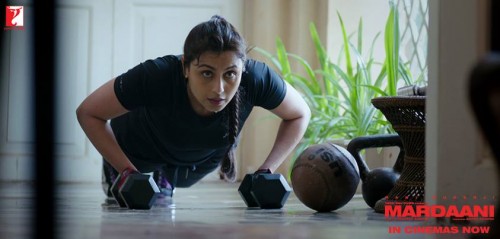 Yes, that is Mukherjee devoid of her usual glamorous attire doing hard core push ups. This year saw Mukherjee, one of Bollywood’s most famous actresses, play the rare, strong female role in “Mardaani.” The Indian crime thriller, directed by Pradeep Sarkar, tells the story of a female cop whose interest in the case of a kidnapped teenage girl leads her to uncover secrets of human trafficking by the Indian mafia. Kudos to Mukherjee for being the protagonist and the hero of the film.
Yes, that is Mukherjee devoid of her usual glamorous attire doing hard core push ups. This year saw Mukherjee, one of Bollywood’s most famous actresses, play the rare, strong female role in “Mardaani.” The Indian crime thriller, directed by Pradeep Sarkar, tells the story of a female cop whose interest in the case of a kidnapped teenage girl leads her to uncover secrets of human trafficking by the Indian mafia. Kudos to Mukherjee for being the protagonist and the hero of the film.
16) The acid attack survivors who showed the world their courage through an empowering photo shoot, thanks to Indian photographer Rahul Saharan.
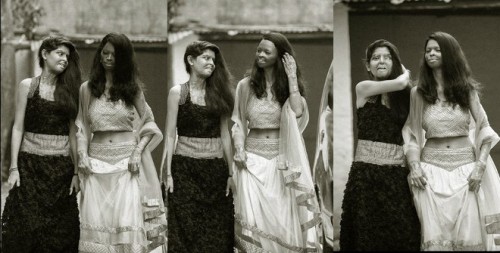
India needs feminism, it’s the right of every girl and she doesn’t need to fight for it and despite of that she is still fighting from a small village to a big city,” Saharan said to Brown Girl Magazine.
[Read the nine things you need to know about Rahul Saharan’s photo shoot]
17) A new comic book character is a super hero named Priya Shakti, a gang-rape survivor, inspired by Hindu mythological tales.
One of the creators, Indian-American filmmaker Ram Devineni, said he thought of the character following the brutal gang rape and murder of a 23-year-old Nirbhaya on a bus in Delhi.
I was in Delhi at the time when the protests broke out and I was involved in some of them,” he said to BBC News.” I was talking to a police officer when he said something that I found very surprising. He said ‘no good girl walks alone at night.’
That’s where the idea began. I realised that rape and sexual violence in India was a cultural issue, and that it was backed by patriarchy, misogyny and people’s perceptions.”
This game-changer comic, downloaded worldwide for free and printed in Hindi and English, was recently available at the Comic Con Mumbai in December. While this one-of-a-kind project creates awareness and attempts to change social attitudes about victim blaming, stricter laws and regulations need to be placed for real change to occur.
[Stay tuned for our interview with Ram Devineni and Dan Goldman, to be published soon]
18) When you, in your own way, stand up for women’s empowerment, everyday.
Finally, and most importantly, we want to salute you – the “average” South Asian man and woman. Whether it is through fearless activism, refusing to internalize societal pressure, respecting the women in your life, writing and creating awareness about women’s rights, or simply supporting “Brown Girl Magazine” (shameless promo here, yep), THANK YOU. Your actions are needed because change is happening, whether you realize it or not. You are the solution. Never let anybody make you think otherwise.
Feature Image Caption: India’s newest comic super hero Priya Shakti|Photo Source: Ram Devineni
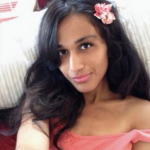 Sheena Vasani graduated with a degree in International Relations from UC Berkeley. She is a self-described compassion, gender liberation, and mental health activist, and has worked with various social justice initiatives, including V-Day. In her free time, she ironically enjoys exploring various religions, cultivating her creativity, and cuddling her kitten. You can follow her on Twitter, and on her personal blog.
Sheena Vasani graduated with a degree in International Relations from UC Berkeley. She is a self-described compassion, gender liberation, and mental health activist, and has worked with various social justice initiatives, including V-Day. In her free time, she ironically enjoys exploring various religions, cultivating her creativity, and cuddling her kitten. You can follow her on Twitter, and on her personal blog.
